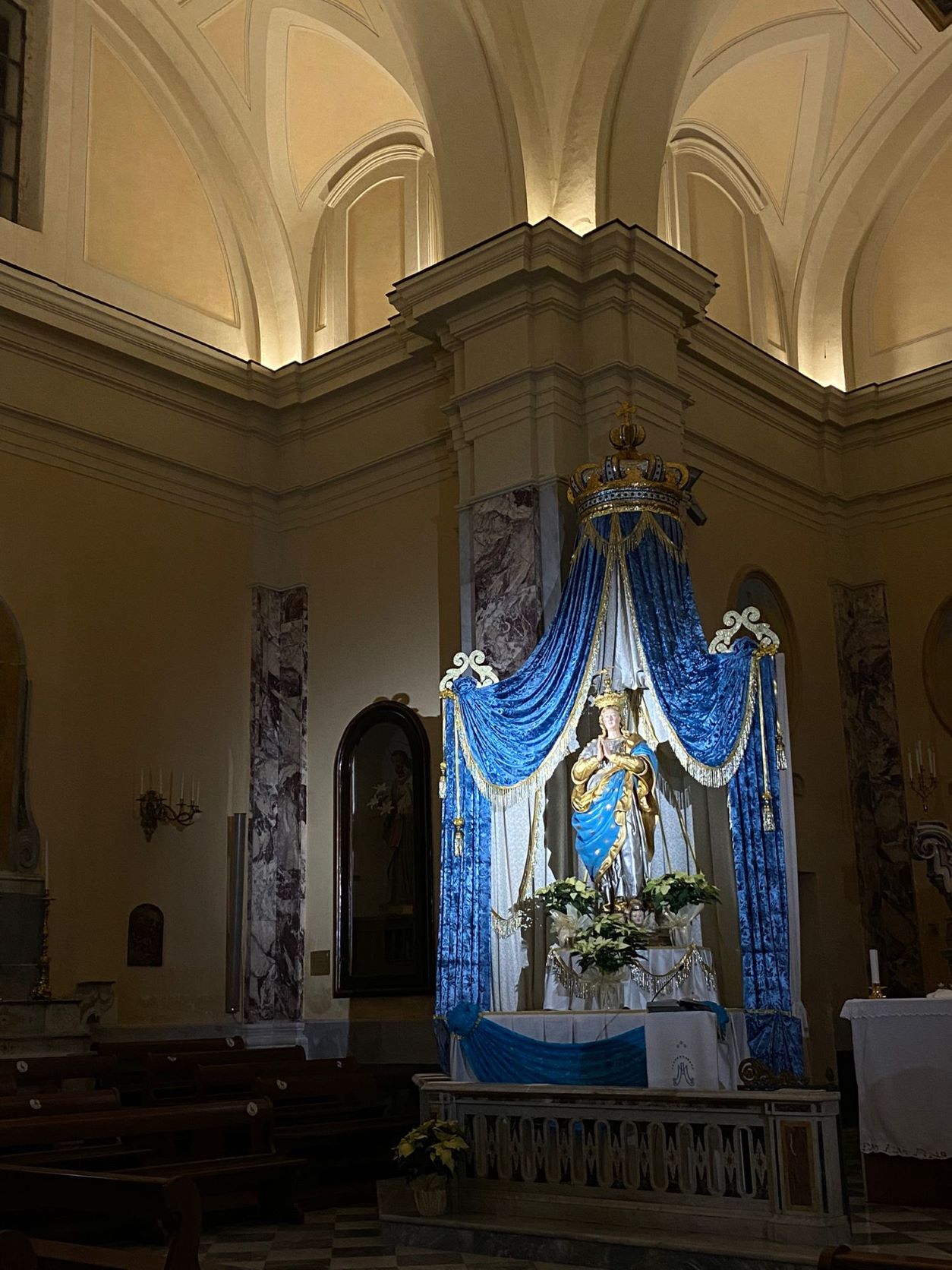Notizie storico-artistiche su statua di Maria SS. Immacolata Nella chiesa parrocchiale di San Felice Martire, in San Felice a Cancello (CE), Diocesi di Acerra (NA), è gelosamente custodita e fervidamente venerata una maestosa statua in legno del 1600 della SS. Vergine. Concezione (Immacolata), capolavoro di raffinato scalpello di autore ignoto. L’antica tradizione vuole che questa statua fosse appartenuta alla famiglia “CARAFA”, duchi di Maddaloni (CE) e marchesi di Arienzo (CE) e regalata a Don Francesco Dragone, ii quale nel 1700 la donò alla Chiesa di San Felice Martire. La statua, alta otto palmi e “rabescata d’oro”, porta sulla testa una pregiata corona d’argento, decorata con oro fino a bagno galvanico. La statua e stata sottoposta a diversi restauri (1895 — 1956 — 1992) a cura della Soprintendenza del Beni Culturali di Napoli e con il contributo economico di tutta la cittadinanza. Allo stato attuale avrebbe bisogno di un ulteriore restauro. In suo onore si celebrano due feste: l’8 dicembre: festa solo religiosa e l’ultima domenica di luglio: festa anche civile.
